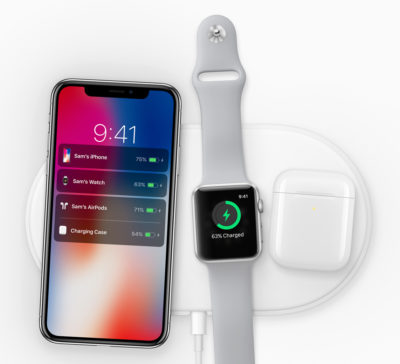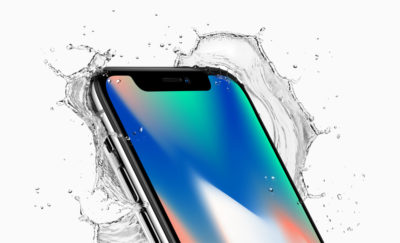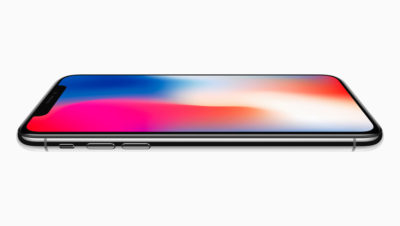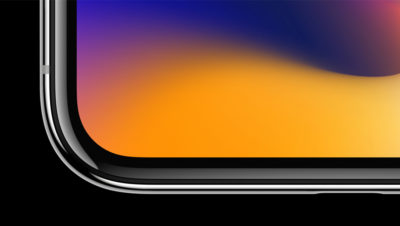I believe Apple’s latest introduction, the iPhone X represents a technological turning point. It’s not so much the phone itself, but the underlying technologies behind it that are truly groundbreaking. Ushered in with the iPhone X, their widespread adoption will have consequences far beyond mobile phones. Here are five reasons:
1. Face Recognition (and real time facial mapping)
Face recognition technologies are available from others, but what Apple has come up with leaves everything else in the dust. This goes far beyond taking a photo and comparing it to a stored image. Apple’s Face ID technology projects invisible dots (in the current version: 30,000 of them) on the user’s face. It then uses stereoscopic viewing from two cameras to essentially create a 3-D map of the user’s face. No special lighting is necessary. In fact, because of IR illumination, this works even in the dark. What’s remarkable is not only the small size of this system, but also that it works fluidly. It is capable of capturing facial expressions in real time. Mapping and processing are so rapid that the data stream can be used to animate virtual characters, as Apple demonstrated with its animated emojis and mask overlays.
The point is that artists and developers will be able to apply this technology in new ways: the iPhone X is the first affordable, portable motion capture device for special effects. Since the mapping process works in real time, making fantasy characters talk and show facial expressions will be as easy as talking to the phone. This could mean: animated virtual announcers, talking heads and fictional characters for advertising, music videos, entertainment and perhaps even drama. Animating cartoons, which took many hand drawings by skilled animators in Walt Disney’s days, has become child’s play. Another application could be video games. Multi-player gamers could adopt fictional characters whose speech and facial expressions mimic the real player’s face, but expressed on the virtual character.
A mere expansion of the technology’s capabilities might make it possible to turn the iPhone X into a fully fledged 3-D body scanner or even a motion capture device. Imagine this: put the device on a stand and walk in front of it in the nude. Now turn around by 360º, and let the iPhone capture a 3-D scan of your body. Again, the data set could be used to bring fictional characters to life, but it could also be used for online shopping. No more need to try on clothes in a store! You could simply get a 3-D simulation of yourself wearing the clothes you are considering. Finding the right size would be automatic. Or people could simulate the look of make-up, jewelry or hairstyles.
Another conceivable application of face mapping technology might be improved speech recognition, for instance in a noise environment. Like a human lip reader, the technology would decode facial expressions to improve the legibility of spoken language. Those hard of hearing might even be able to use the phone as an artificial lip reader.
2. Universal Wireless Charging
Battery capacity is still an achilles heel of mobile devices. Right now, incompatible charging devices and cables mean that we all got into the habit of charging our devices overnight, with chargers we own. Or we carry cables, chargers or external batteries.
What if you could simply “top off” your battery almost everywhere you go? The wireless charging technology Apple demonstrated works on all mobile Apple devices, such as iPhones, the AppleWatch and EarPods.
What Apple is pushing for is a truly universal standard. It would charge all mobile devices, of all manufacturers. This would mean: no more personal chargers are necessary. Everyone could simply use shared wireless “charge pads” located in homes, vehicles, workplaces or public venues. Businesses could either provide charge pads for a fee or allow their free use as a means of attracting customers.
3. Elimination Of Buttons And Ports
In a radical departure, the iPhone X does away with one of the original iPhone’s key features: the “home” button. Apple wants to get away from buttons and ports for one main reason: these are incredibly difficult to insulate from dirt, water and dust. By eliminating all points of entry, water and dirt resistance will become the new standard.
4. OLED Displays
Organic Light Emitting Diode displays have major advantages, but also some disadvantages. Apple’s new OLED iPhone X display (which interestingly is made by Apple’s prime competitor, Samsung) is an industry-first when it comes to size and quality. And it promises to have overcome the known OLED disadvantages.
The last remaining problem is the price: OLED displays are still much more expensive than traditional LED screens, which explains the whopping price tag of the iPhone X. But Apple’s hardcore fans are early adopters almost regardless of cost. And this might give Apple enough sales volume to create a breakthrough opening for OLED technology. In addition to the cost reduction by volume, there are emerging manufacturing technologies (such as printing and roll-to-roll vapor-deposition). When scaled up, these could significantly reduce OLED costs. In a few years, all mobile device makers might offer OLED displays.
5. Grid computing
With its vastly improved processing speed and wireless capabilities, the iPhone X can offload an increasing amount of data onto the cloud. Already, some features of the upcoming iOS 11 are hinting where we are going with this. In iOS 11, rarely used apps and data, and even iMessages and their attachments are no longer stored on the device but on iCloud, from where they can be retrieved if needed. We can expect this trend to accelerate.
In addition, the new faster WiFi and “short-link” radio technology (Bluetooth) processing would enable new capabilities such as wireless screen sharing, or the use of the iPhone X as a remote microphone or camera.
And of course, enhanced access to distributed grid computing makes digital voice assistants like Apple’s Siri steadily more powerful. Siri is already becoming increasingly contextual, and I would expect this trend not only to continue, but also for Siri to become more visual as well. For example, a hearing impaired user might point the iPhone X at a written text and have Siri read it aloud. Or, users might be able to point the camera at a tree and ask Siri: “What kind of tree is this?”
All in all, although the outside of the iPhone X does not look radically different from the original iPhone, the technology inside represents a quantum leap compared to what was possible only 10 years ago.



